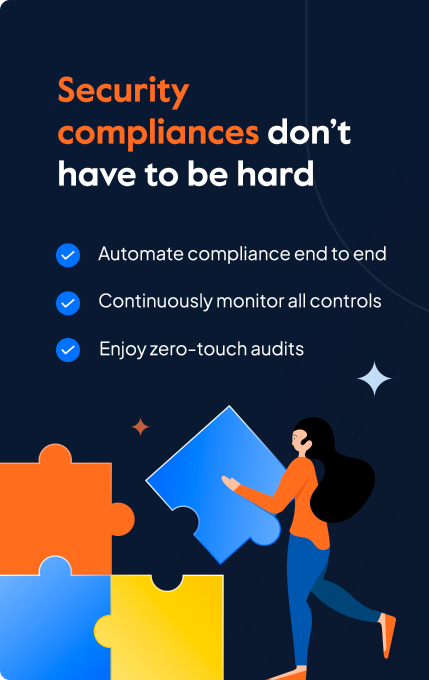Sprinto’s Business Continuity & Disaster Recovery Policy Template
The business continuity and disaster recovery policy template helps organizations plan for unplanned disruptions, minimize downtime, and ensure continuity during and after a security incident.

What is a business continuity and disaster recovery policy template?
A business continuity and disaster recovery policy template provides a structured framework to prepare for and respond to disruptions like natural disasters, cyberattacks, or system failures. It outlines steps to ensure business operations can continue with minimal interruption to protect critical systems and data from malicious actors and outages.
Why do you need this template?
A BCDR policy template equips businesses to anticipate, prepare for, and recover from disruptions, ensuring resilience and protecting reputation. A well-defined BCDR policy reduces financial losses, protects brand reputation, and ensures compliance with regulations, while also fostering resilience and preparedness for future crises.

Operational resilience
Ensure that your business can continue to function even in the event of a major disruption.

Data protection
Safeguard critical data by having backup and recovery measures in place, ensuring minimal loss in case of incidents.

Regulatory compliance
Meet industry standards and regulations that mandate organizations to have disaster recovery and continuity plans.

Minimize downtime
Quickly restore essential services and reduce the financial and reputational damage caused by prolonged outages.
How to use the business continuity and disaster recovery policy template?

Design and customize
Tailor the template to suit your business’s critical operations. Define key business functions, recovery priorities, and assign responsibilities for managing disruptions.

Test your template
Conduct regular tests (such as drills and simulations) to ensure that your business continuity and disaster recovery plans are effective and that teams are ready to respond swiftly during a real crisis.

Acquaint your workforce
Educate your employees on their roles and responsibilities during a disruption. Ensure they are familiar with the response plans and know how to act during an emergency.

Make improvements
Regularly review and update the BCDR policy (at least annually or after a significant incident) to account for new risks, changes in infrastructure, or shifts in business priorities.

Leverage automation
Implement automated monitoring and alert systems to detect potential risks early and trigger immediate responses. Automate backups and data recovery processes to ensure quick recovery with minimal manual intervention.
Business Continuity & Disaster Recovery Policy Template
Get started with this template right now. It’s free

